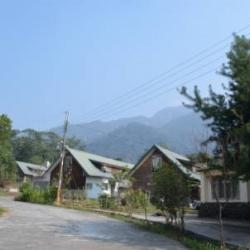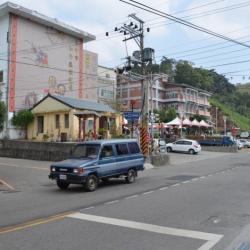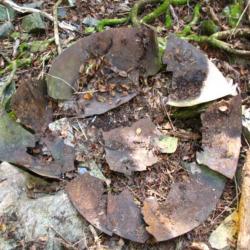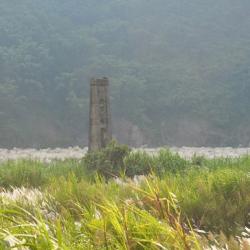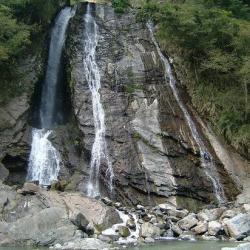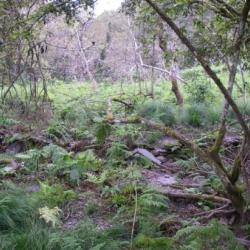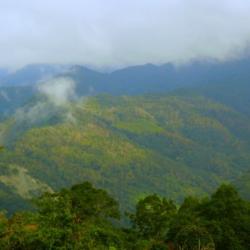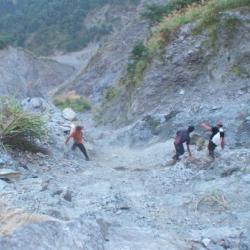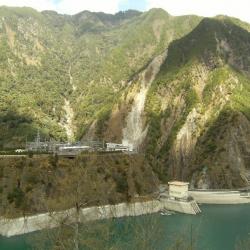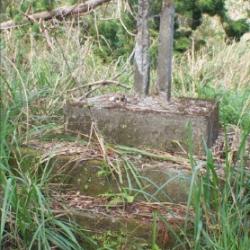The hamlet is on the east side of the Nanshi hamlet, on the high ancient river terrace on the right bank of the Dajia River. The terrain is high and flat, and prehistoric stone tools can be collected from the surface of farmland. The residents came from Songhe hamlet after the 72 floods in 2004. In addition to the Atayal, the residents also include Hokkien, Hakka, Amis, and other ethnic groups.
The Typhoons Mindulle and Aere in July and August 2004 hit Songhe hamlet, causing all 78 households to collapse. The county government and the office urgently placed the affected households in the Indigenous Arts Center. Because some areas of the Songhe Hamlet were listed as dangerous areas and could not be rebuilt, the government allocated 0.9 hectares of the land of the Indigenous Arts Center and had the Red Cross build 40 houses to resettle the Songhe victims.
